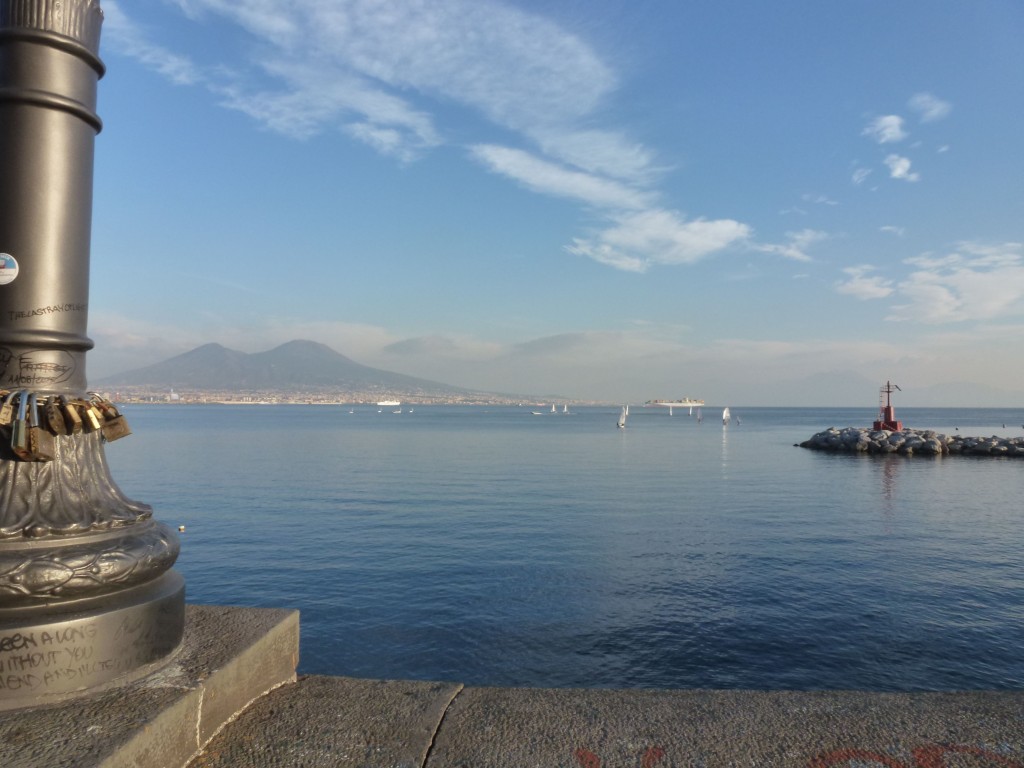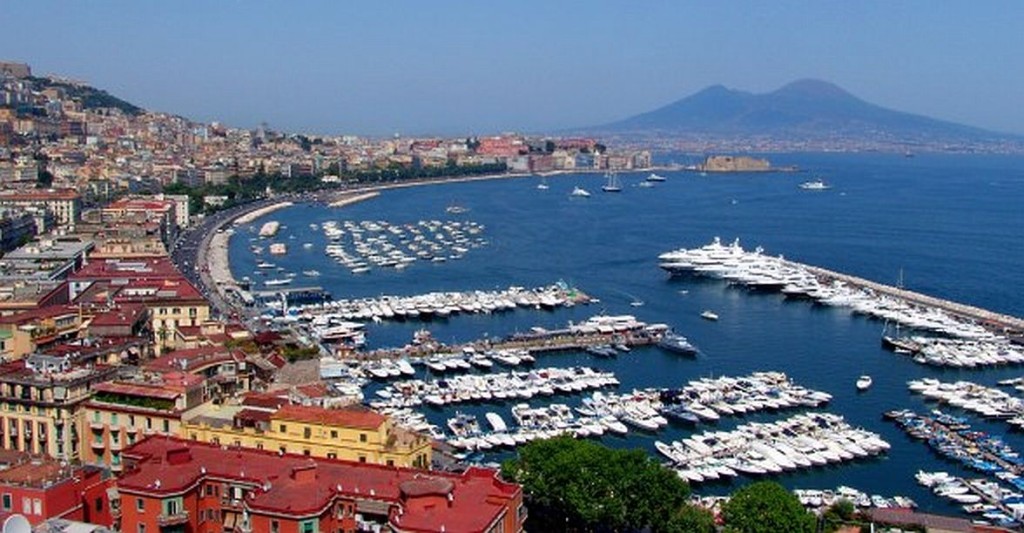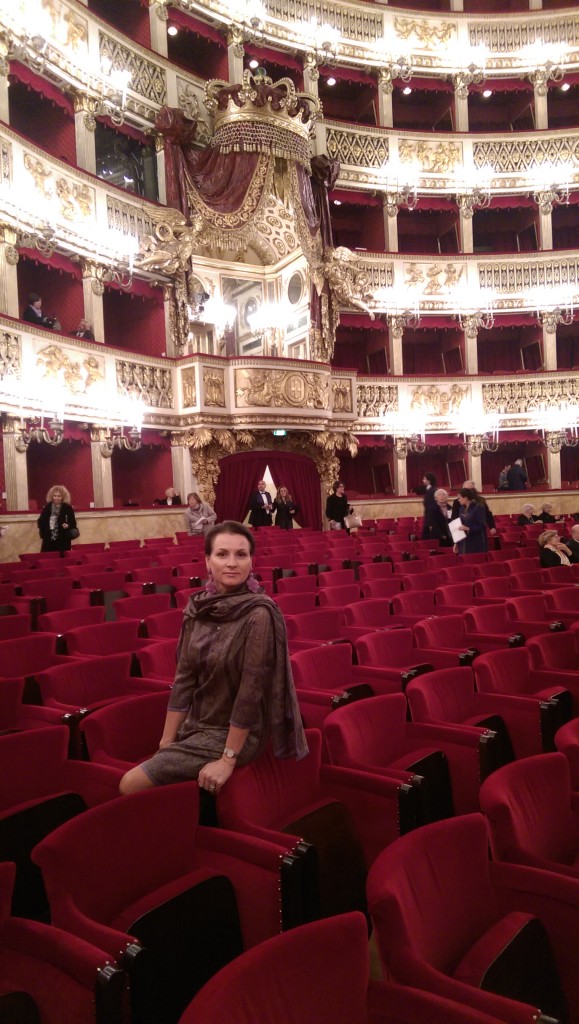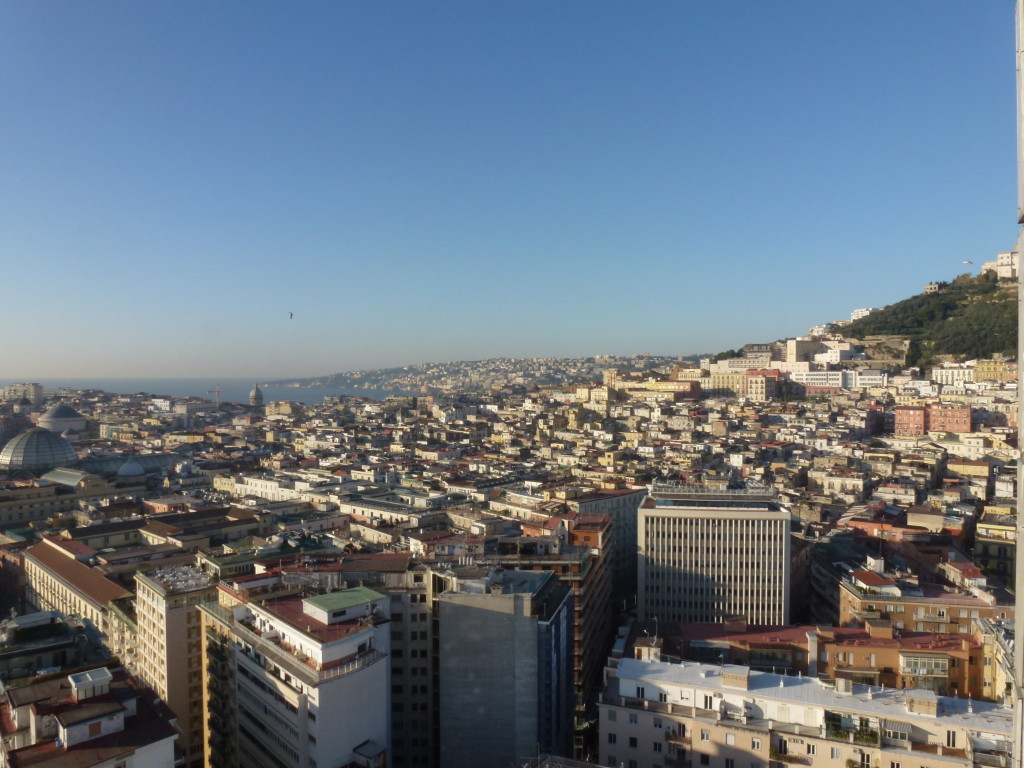
Gulf of Naples and Vesuvius
There are just a few European cities over which so many different powers were fighting for so many centuries.
Naples was probably founded by the inhabitants of a Greek settlement around 8th century BC. In 326 BC, the city was seized by the Romans and became a host city for many emperors over many centuries. In 476, the last Roman emperor was dethroned and held prisoner in Casteldell´Ovo. Gradually, the control over Naples was taken over by the Byzantines, in 1137 the city was seized by the Normans and the Kingdom of Sicily was established which was growing into beauty and wealth. Soon afterwards, the city was seized again, this time by German Staufen, in the 13th century the line of a French Anjou dynasty was in power, in the 15th century the Aragonese took reign of Naples, and at the beginning of the 16th century, for a change, the Spanish became its rulers. In the 18th century, the city remained under the rule of Austria for about 30 years. The most flourishing times for Naples came probably under the Bourbon dynasty when it became one of the most important European cities. This fact did not pass unnoticed by Napoleon Bonaparte either who seized Naples at the end of the 18th century; however, after 1815 Naples returned to the hands of the Bourbons. In 1860, the troops of Garibaldi seized the city and thus it became part of the emerging Italian Kingdom and later the republic. Since the Italian union in 1861, Naples has been struggling for its prestige with other major Italian cities.

Naples and Vesuvius
Naples is the city of contrasts, most likely due to the fact that each ruling family has left their legacy here. Naples is not that homogenous and “Romanian” as for example Rome. It is something between Marseille, Paris, Milano, Genova, Athens, and Havana. Naples has a really attractive location which predestined the city for busy trading. A big bay led to construction of a large port; natural conditions, scenic area and favourable climate invited to a quick settlement.
Naples is beautiful from a distance. Gorgeous bay, Mount Vesuvius rising in the background, rich vegetation, wavy valley, majestic battlements of medieval castles, and domes of significant buildings ensure the city’s monumentality. When you take a closer look, it may seem nobody takes care of the city. It is chaotic, loud, dirty, smelling, neglected, dusty, battered, and falling apart. And this exactly is the key to its careless charm, the origins of which must be uncovered first to discover its magic. We will understand a lot when we learn about Naples´ history, lifestyle, and character of its citizens.
The people of Naples don´t play at anything, they don´t pretend. They are lazy but pleasant. They are not very open but are proud. If you don´t speak Italian or French, you have no chance to make yourself understood. The citizens enjoy their city fully but they don´t take care of it, as if they were expecting another Vesuvius eruption any moment again. So, the city somehow takes care of itself where only all that is firmer and more stable survives.
These days, Naples is not more dangerous than New York, Marseille, or London Soho, as it often used to be said in the past. All tourists are rushing to infamous Spanish quarters for the best pizza (which you just must try since it originated in Naples). Through the narrowest and longest paved streets where cars can´t get through, scooters are speeding up and masterfully keep off the pedestrians who become moisturised by drops of water from laundry hanging all over them and you can´t see a piece of the sky above. You are in the centre of action. Numerous old squares with marble fountains are hidden by crowns of ancient trees; in corners you will discover headstones and numerous evidence of rich history. Monumental citadels and castles show efforts of many conquerors to protect their pray against new desirous raiders; richly decorated cathedrals show evidence of power of rulers and influence of the church. The most significant museum of archaeology in the world contains countless antique treasures of more than 2 thousand years old. Richly decorated house facades are black with clinging ash, a remainder of the Mount Vesuvius eruption in 79, the city´s riverside, streets as well as the port and beaches are black too.

Teatro di San Carlo
Teatro di San Carlo, gem among opera scenes
In the evening, the city changes. Black colour of the streets blends into the darkness and together with the Neapolitans we are on our way to the most amazing theatre, the oldest opera scene in Europe, Teatro di San Carlo. Since its foundation in 1737 it has been the oldest continuously functioning opera scene in Europe. Thanks to the Bourbon king Carl VII who had it built, the centre of opera moved here from northern Italy. Theatres La Scala in Milano and La Fenice in Venice were built only years later in the same architectonic style and San Carlo served as a model for many other major opera scenes all over the world. A large auditorium originally accommodated up to 3000 viewers, but after the WWII bombing the theatre was reduced when reconstructed. Despite this fact, today it can accommodate about 1500 viewers and its still impressive stage commands respect. Only strong singers may perform here so that their voice gets to all corners of the auditorium.
After the union of Italy in 1861, the centre of opera moved north again to La Scala; however, thanks to financial support, quality opera composers (Puccini, Leoncavallo, Giordano, Cilea), outstanding orchestra, conductors, management, and pride of Neapolitan opera lovers, the glory of the opera house gradually returned again. Opera schools were created here; composers were supported, so the importance of opera could only flourish. By the end of the 19th century, the opera house assembled its own great orchestra under the lead of Pietro Mattucci, which also attracted renowned conductors, such as Arturo Toscanini, Pietro Mascagni, or composer Richard Strauss. Only one famous opera personality never came back. It was Naples countryman Enrico Caruso who in 1901 was booed off by a part of the audience and refused to come back ever since to the sorrow of everybody, and they say he was spending more time in Sorrento than Naples ever since.

Old City of Naples
Famous conductor Zubin Mehta, who began his carrier here as a young man, now in his 80s, has returned to the theatre, this time as head conductor. His Carmen interpretation in December 2015 was breathtaking and commanded respect of audience as well as orchestra and singers. Neapolitan opera audience is fantastic, as if from another world. During the day carelessly looking Neapolitans obviously cherish the place they are visiting and in the evening they change into a graceful, elegant, and festively tuned audience that is able to provide an expert opinion as well. They are attentive and uncompromising. The artists may be condemned or raised to heaven’s heights by them. That´s why the atmosphere in the Neapolitan opera is inimitable, because, on the contrary to other world scenes, it is true and authentic.
They say we live at the time when the same Vesuvius eruption may occur – just like the one that destroyed Pompeii and Herculaneum 2000 years ago. The Neapolitans therefore developed their own ironical explanation of the origins of a known saying “To see Naples and die”. The first explanation says that the city is so beautiful that you cannot see anything nicer anywhere and therefore you may peacefully die right now. The second explanation says that Camorra, the Neapolitan-Sicilian mafia, was lurking at every single corner here which means you never leave Naples alive. Well, and the third confirmation of the saying will come with another sudden Vesuvius eruption. However, everybody hopes that scientists may be wrong.
By Iva Drebitko
Photos: Archive of the author

